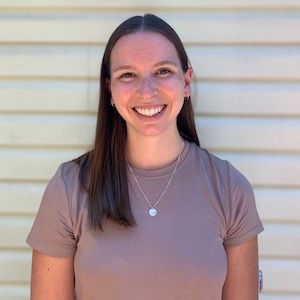Article
Meeting Daily Step Counts May Improve Time in Range in Adults with T1D
Author(s):
An analysis from ADA 2023 suggests meeting or exceeding 7,000 - 10,000 steps per day is associated with marginal improvements in time in range in adults with T1D.
Lauren V. Turner, MSc
Credit: LinkedIn

New research suggests matching or exceeding 7,000 to 10,000 steps per day is associated with marginal improvements in time-in-range in adults with type 1 diabetes (T1D).1
The findings, presented at the 83rd Scientific Sessions of the American Diabetes Association, showed time in range improvements were similar by insulin modality, but only detected significant differences for standard pump and hybrid closed loop users.
“Based on this cross-sectional analysis, a hybrid closed loop may confer some protection against activity-induced hypoglycemia and promote higher time in range,” wrote the investigative team, led by Lauren V. Turner, MSc, a PhD student at York University.
Physical activity is well-documented as beneficial for individuals with T1D, with wearable fitness monitors allowing users with T1D to track their daily activity levels. A recommended 7 - 10,000 steps per day is suggested for overall health, but there is a lack of a clear association between step count and time-in-range metrics in patients with T1D.2 The aim of the current analysis was to determine how being below (<7,000), meeting (7 - 10,000), or exceeding (>10,000) steps per day affects time-in-range metrics in adults with T1D using different insulin modalities.
The Type 1 Diabetes Exercise Initiative (T1DEXI) study recruited a total of 561 residents in the United States with T1D for >2 years on multiple daily injections, standard pump, or hybrid closed loop. Investigators collected data on study exercise video sessions (2 - 3 times per week, 30 minutes each) and other physical activity events. All participants wore a Verily Study Watch and continuous glucose monitor for 4 weeks. Metrics for time in range were defined as time below range (<70 mg/dL), time in range (70 - 180 mg/dL), and time above range (>180 mg/dL).
Overall, a total of 260 individuals (mean age, 37 years; 73% female; A1c 6.6%) met the study criteria of ≥2 days in each of the 3-step count groups, failing to meet, met, and exceeding step count goals. Investigators compared glycemic metrics on days below, meeting, and exceeding step count goals within each subject. For the analysis, P-values were calculated for paired t-tests.
For all participants, their mean time in range was 2% lower and time above range was 2% higher on days when participants failed to meet step count goals, compared to meeting or exceeding step goals. The analysis showed time below range was 0.3% higher on days exceeding step count goals compared to failing to meet or meeting goals.
Investigators noted the trends were similar across insulin delivery modalities, but the variation differed and thus, affected significance levels. The analysis showed time below range was significantly elevated for standard pump (0.8%) and hybrid closed loop (0.4%), but not multiple daily injections, users when step count goals were exceeded versus when participants did not meet step count goals.
“Future studies can use the T1DEXI dataset to examine the influence of insulin delivery excursions within an individual, which could account for differences in time in range metrics specific to the user’s insulin modality,” investigators wrote.
References
- Turner LV, Marak C, Calhoun P, Gal RL, Li Z, Young G, Patton SR, Clements MA, Martin CK, Doyle FJ, Castle JR, Gillingham MB, Rickels MR, Beck RW, Jacobs PG, Riddell MC. Influence of Daily Step Counts on Glucose Outcomes in Adults with Type 1 Diabetes (T1D). Poster presentation at the 83rd Scientific Sessions of the American Diabetes Association. June 23 – 26, 2023.
- Kraus WE, Janz KF, Powell KE, et al. Daily Step Counts for Measuring Physical Activity Exposure and Its Relation to Health. Med Sci Sports Exerc. 2019;51(6):1206-1212. doi:10.1249/MSS.0000000000001932





